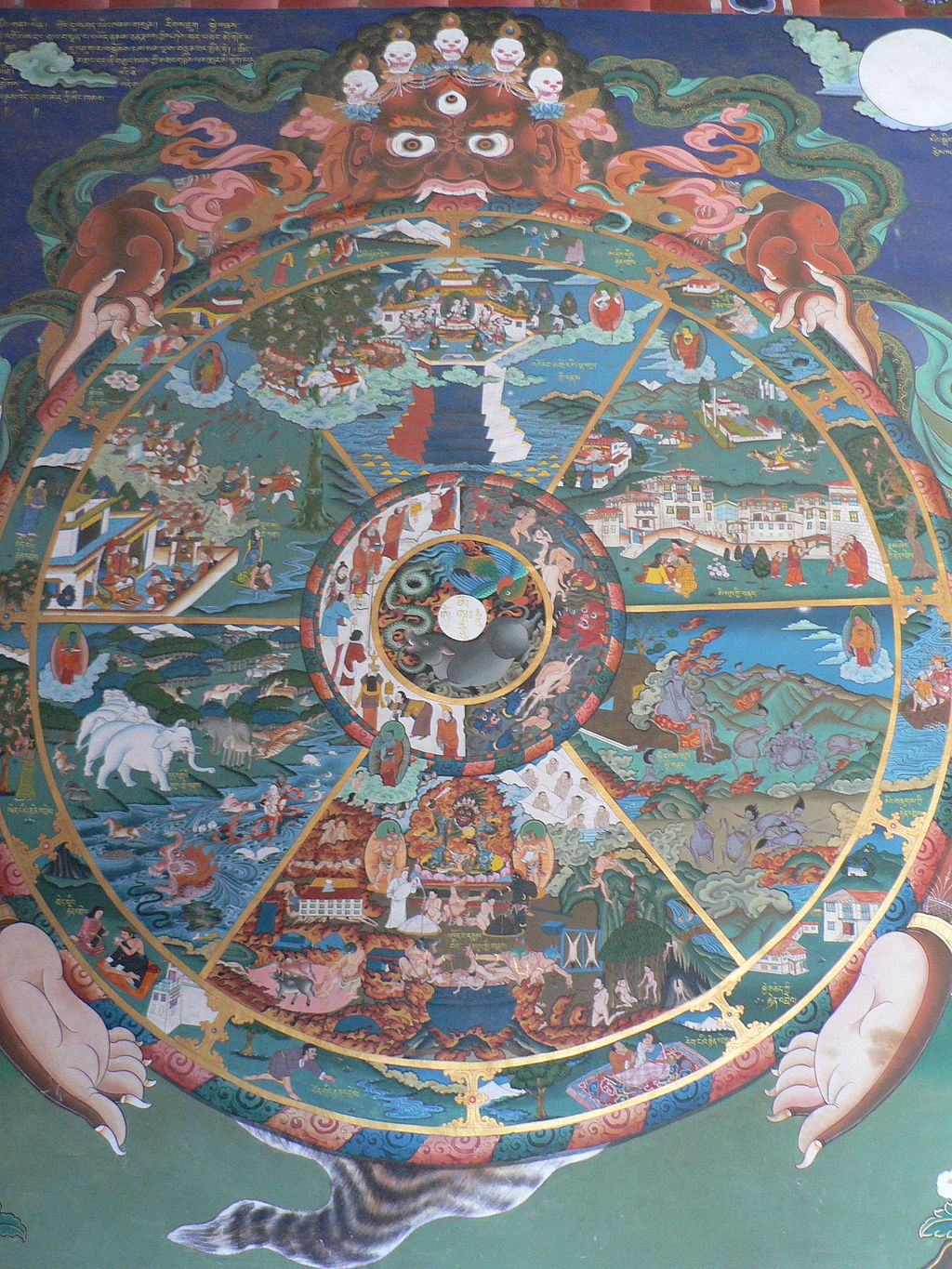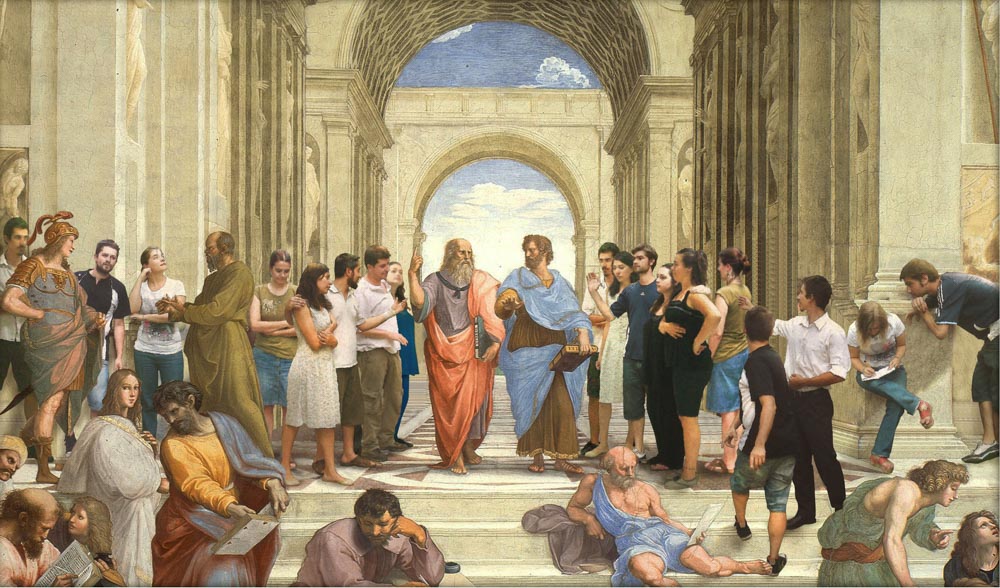Spirituality and Contemporary Mainstream Cinema
Article By Sukesh Motwani
 “Who were you that I lived with, walked with? The brother, the friend? Strife and love, darkness and light…are they workings of one mind, features of the same face? Oh my soul. Let me be in you now. Look out through my eyes. Look out at the things you made. All things shining.”
“Who were you that I lived with, walked with? The brother, the friend? Strife and love, darkness and light…are they workings of one mind, features of the same face? Oh my soul. Let me be in you now. Look out through my eyes. Look out at the things you made. All things shining.”
“Maybe all men got one big soul where everybody’s a part of it. All faces are the same man, one big self. Everyone looking for salvation by himself. Each like a coal drawn from the fire.” – The Thin Red Line (1998)
This is a humble attempt by a cinegoer, and a philosopher, to chronicle examples of how spirituality and popular cinema can merge beautifully. Story telling in the form of myths, folk tales, theatre, and even dance, has always been a means to impart values across generations. But in the last century, Cinema has captured our imagination; images, coupled with sound and music, used by filmmakers to investigate Life. The genre can truly embody archetypes of beauty and truth. It can remind us of the eternal nature of the Soul. And it can encourage us to manifest the magic of our potential as dreamers, lovers, and architects of a new reality; one in which we truly find peace within our hearts and minds. Hence, it can serve audiences, far beyond entertainment and gratification of the senses for puerile joy.
Spiritual cinema invites you to examine dogma…to draw your own conclusions rather than accept the experience of another. Above all, these films make you feel better about being a human being but don’t shy away from confronting the darker elements of humanity or the cosmos. They deal with both the darkness and light. These films are life-affirming and hold human beings as sacred rather than expendable, and encourage the audience to ponder existence more deeply than day to day routine. One hopes for a viewer demographic that is shifting its ‘cinema viewing palate’ from mindless to meaningful cinema; fine, inspiring and consciousness elevating. This particular time in cinema is ripe, as viewers crave for a deeper meaning in their films.
Can cinema elevate our consciousness? Can cinema teach us to be kinder and loving? Popular mainstream cinema from different parts of the world in the last three decades has made the grade on this intention. What do films like Star Wars, Shawshank Redemption, Forrest Gump, Avatar, Memento, Interstellar, Ground Hog Day, Eat Pray Love, The Pursuit of Happyness, Crouching Tiger Hidden Dragon, Amelie, and The Matrix Trilogy have in common? Yes, they are extremely popular and huge money-spinners and they have big stars. But think back to when you first walked out of the cinema hall after watching these movies? Did it inspire a sense of hopeful introspection about life? These films were heart-opening and soul stirring gems; they nudged us, provoked us and inspired us to ‘living absolutely and fully’…these films tell us great stories that ask the big questions about life, and the purpose of existence: Who are We? Where do we come from? Where are we going? What really is our potential?
Furthermore, all great cinema with spiritual messages remind the viewer of the beauty of the human soul. Only by this recognition, are we driven to change ego serving behaviour – not by threats, guilt trips or slick persuasion but by the personal realization of the beauty within each one of us; a connection to something greater; a purpose in life far more satisfying than chasing money, lust or fame. The unfolding human drama on this planet provides ample fodder for countless cultural stories which shape new generations. Whether they are mythological tales, legends, fairy tales or simply modern-day heroism plucked from any town or village across the globe, humanity craves inspiring stories depicting the harrowing journey of life and the character traits necessary to triumph over hardship and attain the happiness, freedom and peaceful co-existence with one another.
One major reason for the emergence of such cinema is that we stand at a crossroad, both in society and in the movie industry. We live in dark times and life can feel disheartening: terrorism, civil wars, ideological and religious tension, refugees struggling for their place under the sun, famine, climate change, crime, natural disasters, etc. are hogging world headlines. It’s easy for the human mind to adopt a despondent attitude when bombarded by disastrous images. And yet, humanity can be inspired to emulate heroic deeds, and to show courage or uncommon compassion. In fact, perhaps we naturally yearn for it; some find it in their faith or in spiritual teachers, and some in travel. Yet others resort to recreational highs through usage of drugs, or thrill-seeking.
The extremely successful film by master James Cameron whose blockbuster Avatar was a fascinating ode to spiritual oneness, states that ‘One of the film’s philosophical underpinnings is that the Na’vi [race] represent that sort of aspirational part of ourselves that wants to be better, that wants to respect nature, while the humans in the film represent the more venal versions of ourselves, stuck in the banality of evil that comes with corporate decisions that are made out of remove of the consequences’. The film elucidates beautifully that all gratification of our temporary selves, our physical bodies, is just a petty exercise, because we are all eternal beings integral to an all-encompassing Nature. Destroying the ecosystem of a planet therefore, is akin to destroying humanity. Avatar grossed $3 billion at the box office worldwide!
The cult blockbuster Forrest Gump made 3/4 of a billion dollars, Pursuit of Happyness made $300 million. The spiritual masterpiece Life of Pi by auteur Ang Lee collected $609 million.
Christopher Nolan’s Interstellar – one of the biggest box office hits of 2014 – suggests a 3000-year old Vedic notion of a universal super-consciousness that transcends time and space, within which all human life is connected. The film’s astronaut hero Matthew McConaughey declares that the mysterious all-knowing “they”, who created a wormhole near Saturn, are in fact “us”. He saves mankind by travelling through this wormhole, thereby dissolving his sense of material reality. This echoes a central notion of the Upanishads, among India’s oldest philosophical texts, that hold that the individual human mind is merely a reflection of the cosmic ‘mental’. The multidimensional tesseraact- the infinite reflective prism that he finds himself in as he comes to this realisation, and in which he views life from every perspective – is the film’s expression of Indra’s net, a metaphor from the Atharva Veda, also referenced in early Buddhism. The metaphor is used to illustrate the concept of shunyata (emptiness), Dependent Origination, and interpenetration in Buddhist philosophy. It depicts the universe as an eternal web of existence spun by Indra, the king of Gods, each of its intersections adorned with an infinitely sided jewel, every one continually reflecting the others. Christopher Nolan’s other breakthrough hit, Memento had its primary protagonist – as an amnesiac whose unreliable consciousness is the faulty lens through which we see the story of a murder, told both in chronological and reverse order. This notion of distrusting individual reality and looking beyond it for truth was extended in Nolan’s cult hit Inception too, where the protagonist leads a team of ‘psychonauts’ on a heist deep within the recesses of a billionaire’s mind – a spiralling adventure of dreams within dreams! The core inspiration being the most basic metaphysical idea from the Vedas of maya – ‘Life is nothing but a dream, a projection of our mind’. The deeper invitation of Inception is to slip beneath our cognitive certainties, not back into pre-rational realms or sensory chaos, but into ever-surprising depths of who, and what, we truly are. Beautifully through its narrative, it pushes us to deconstruct the ‘I’ within the dream. As one sufficiently penetrates the self-presentation of the apparent dreamer, a startlingly significant discovery is made: the dreamer is actually just another part of the dream, as mechanically constructed as the other elements of the dream. Decentralising our egoistic sense of self allows our true nature to more clearly emerge and the same is true of our dreams – decentralize the “I” who is starring in your dream, and a deeper sense of our true individuality emerges, one that is capable of recognizing itself in and (eventually as) every part of the dream.
But the true trendsetter movie when it comes to merging spirituality into mythical narrative is Star Wars. It was this film with its cosmic scale and theme of a transcendental force that confers superhuman powers on those who can align with it. This woke the entire movie-watching world to Indian esotericism more. Its creator, George Lucas was influenced by mythologist Joseph Campbell, whose work A Hero with a Thousand Faces traced the narrative arc common to all mythic heroes that Luke Skywalker would embark upon. Joseph Campbell’s favorite mantra, “Follow your bliss” is derived from the Upanishads, Sat-Chit-Ananda. He claimed that he may not know the true nature of his being, but he knew where his true rapture lay, and that brought him his consciouness and his being. Inspiration from this mantra became the paradigm for Skywalker’s own realisation of the Force, the sense of peace, purpose and power gained once he allowed himself to accept and unify with it. As his mastery of the force neared its peak, Skywalker comes perilously close to taking Vader’s evil path. With this, Star Wars established the principle of superheroes having to overcome an inner darkness while battling an external enemy, to find their evolution of consciousness in the process. Nolan’s trilogy of batman movies – in which a tortured protagonist struggles as much to avoid becoming his nemesis, as to defeat the external one, emphasizing the essential inward journey whilst facing the demons externally.
Apart from these mammoth blockbusters, another notable heartwarming film that deeply inspired and catalysed a debate on spirituality was the Harold Ramis directed Groundhog Day (1993). The protagonist Phil a repugnantly self-centred TV weatherman, finds himself trapped in a rerun of his most unfavorite day of the year. Over and over again, he wakes up at 6 am to the same radio sounds, to the same characters in a small town celebrating Groundhog Day, every day! Since there is no tomorrow and no consequences, Phil amuses himself with overeating, robbing an armored car, and seducing a local woman. He refines his line in order to win the affections of Rita but she breaks free from him each time. Even his various suicide attempts come to nothing. The universe is presenting Phil with the same day over and over again, until he masters it. His challenge is to grow less ego-centric and learn to interact more positively with those around him, to be of service to the world. The day he completely evolves to become his kindest and wisest, he moves onto the next day. What’s ultimately at play is a much deeper, incredibly profound spiritual message: that the universe continues to teach us lessons until we learn them, from one lifetime to the other, from one day to the next. In Phil, we see the evolution of an enlightened seeker. As he learns something new about himself each day, he uses it the next to help the world around him.
What soul cannot fall deeply in love with Amelie’s unfaltering and insanely sublime acts of kindness as she struggles with her own inner demons? The biggest French language blockbuster ever, Amelie (2001) had posters proclaiming, “She’ll change your life!” An unforgettable ode to the kindest girl on Earth! This visual delight of a film, presents an unforgettable portrait of a woman who demonstrates a remarkable talent for the spiritual practice of kindness. To start with, Amelie Poulain is like many of us; she comes from a rather dysfunctional family and is introvert, shy and unsure how to connect with love. But in a magical moment, Amelie discovers and returns a tin of childhood treasures to a man, and then savours the tearful moment of his reunion with the past. Rejuvenated by the acts of kindness, Amelie vows to do more good works. Students of ethics behaviour have identified a phenomenon called the ‘Helper’s High’ – a feeling of well-being and buoyancy experienced by those who are kind to others. Amelie experiences this bliss. It’s not enough, though, when she wants to express her amorous feelings for Nino, her crush. She is helped eventually by Dufayel, a painter in her building, to connect with her soul mate.
At the other end, around the same time, the great Ang Lee masterpiece Crouching Tiger, Hidden Dragon (2000) presented a unique take on the traditional Chinese Wuxia martial arts narrative. International audiences all over were awestruck by the beauty, pain, passions and the dragons hidden inside Jen, the younger female protagonist as she struggles to pay the price of the freedom she wishes for. The young lovers in the film Jen (Jiao Long, ‘Delicate Dragon’) and Lo (Xiao Hu, ‘Little Tiger’) are stubborn and self-absorbed, but show great potential. Hence the tiger crouches and the dragon is hidden. Ang Lee describes the phrase “crouching tiger, hidden dragon” as a common Chinese idiom which reminds us never to underestimate the mysteries, the potent characteristics that lie beneath the surface of society. Jen and Lo impulsively rebel against such society’s attempts to restrict their desires while the older protagonist couple in the film – Li Mu Bai and Yu Shun Lien – are exemplary warriors who fail to embrace their love for one another due to blind adherence to ritual propriety. Tao Te Ching Verse 33 states, “To conquer others is Power. To conquer oneself is Strength”. So the film essentially is Jen’s struggle to conquer herself through a process of authentic self-cultivation that balances the traditions, moral principles, and social obligations of Confucian humanism combined with the spontaneity of Daoist naturalism. Jen rejects society by becoming a warrior, a criminal, and rejects the elder couple’s attempts to mentor her. But she finds that this extreme type of freedom comes at a hefty price; the loss of the important relationships in life. So the film’s beautiful ethical message: A good person must respect moral principles, propriety, filial piety, and integrity, but not at the expense of autonomy and creativity. It is only by balancing these values that we can conquer the self, and it is only by conquering the self that we can flourish.
There’s a yearning for meaning and hope in the world, for stories that challenge us to be our best; to lift up our hearts to the skies, and to encourage us to live fully to the potential of the people we were born to be, and to evolve with every challenge rather than succumb. For the last 100 years, modern society has placed its faith in science as the final arbiter of disputes. “Can you prove it?” has come to mean, “Can you take it into a laboratory and scientifically demonstrate it?” Before the Renaissance, the pendulum had been stuck in exactly the opposite direction – the Religious Institution – be it the church or the religious figurehead was the arbiter of what was Truth. Perhaps, part of the purpose of spiritual popular cinema is that it take this pendulum to settle somewhere near the middle; cinema that illuminates a path informed by Science but enriched by Spirituality!
Paying a tribute to the divine and truest undying essence within all of us, a befitting end to the piece would be the following lines from the film Samsara – an acclaimed spiritual love story. Apo (the mentor-Lama) writes in his last letter to Tashi, the protagonist: “I realize now that my task is not over, and so I will be returning to samsara. I know that we shall meet again. Perhaps when we do, you will be able to tell me what is more important: satisfying one thousand desires or conquering just one.”
Image Credits: By Insomnia Cured Here | Flickr | CC BY-SA 2.0
The entity posting this article assumes the responsibility that images used in this article have the requisite permissionsImage References
creativecommons.org/licenses/by-sa/2.0/
Permissions required for the publishing of this article have been obtained
Article References
Bibliography 1. Montoya, Miguel. Illuminate Film Festival Blog




Hi i’d like present you my book Templar Order edited by Bastogi libri translate in four languages, all my royalties will be donate for help the children by AMADE MONDIALE.
If you want help me sharing this information or by review would be wonderful.
Thanks for your attention Regards Domizio CIPRIANI Grand Prieur Magistrale Ordre des Templiers de Jerusalem Principautè de Monaco
http://www.prleap.com/pr/254513/templar-order-the-templars-path-the-path-toward
http://Www.templar-order.com
http://Www.prieure-de-sion.com
https://m.facebook.com/story.php?story_fbid=1904703306478381&id=100008161905516